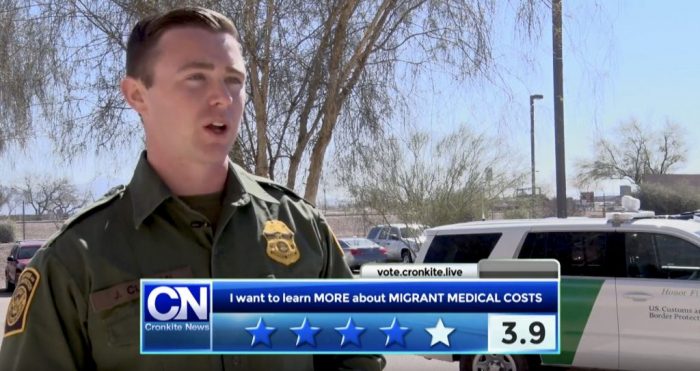
Choose Your Own Adventure books were a big hit. But what about choose your news?
This isn’t quite personalizing algorithms on a news site’s homepage or platforms surfacing different items in your feed. One local TV station let its followers decide the stories shown on its evening newscast. It used GroundSource to collect story ideas over SMS from viewers two weeks in advance and polling Twitter followers hours before the show began over which topics they wanted to watch. (“An experimental community” beat “oil on Native lands” and “emissions and ride-sharing,” this time.) The unchosen content still was available online for viewers to see.
Netflix has done a similar experiment — and was sued by the Choose Your Own Adventure series publisher — with interactive content, allowing viewers to pick the next step in the show, and plans to do much more. For Cronkite News on Arizona PBS, this was one night of several experiments.
Choose your news! 📢
POLL: Which Arizona sustainability story would interest you the most?
— Cronkite News (@cronkitenews) April 5, 2019
The 30-minute newscast is produced each weeknight by students at Arizona State University’s Cronkite School of Journalism, led by a group of seasoned TV folks. Former Tegna VP of digital audience engagement Frank Mungeam worked with more than 100 students to make Choose Your News happen. As the Knight professor of practice in TV news innovation at ASU, Mungeam has spent the past eight months working on infusing local TV news with new ideas, starting at Arizona PBS’s KAET. He also coached local TV stations as part of Table Stakes, the boot camp funded by Knight. It’s part of the foundation’s recent push to invest $2.6 million in innovating in local TV news.
Local TV isn’t perfect, and often the flashy shots and on-camera hype overwhelm the civic duty of providing information. (We won’t go into the Momo challenge again.) While viewership is declining, there’s still a steady base of followers.“We are all trying to answer the question of how we present and deliver news to the next generation of news consumers,” Mungeam said. “Who better to engage with to come up with an answer to that question than the future consumers and the future journalists?”
Choose Your News involved 60 students essentially pre-producing three shows ahead of time. Mungeam wrote up a case study on the setup:
Other experiments included explainer videos (the Shorenstein Center and Northeastern University found that Vox explainer-style videos could help boost the younger folks’ interest in local TV news), a Ken Burns-style documentary about the Grand Canyon, and segments devoted to specific topics. Not everything worked: “We had incremental losses within almost every one of the things we would call wins.”We divided our 30-minute broadcast into three distinct blocks. Each show block featured a different audience engagement technique: The first segment used live audience voting to determine what story would air in the second block; during the second block, we solicited real-time social reaction; and in the third segment, we featured the ‘voice’ of the audience, including live curation of comments from social media.
Mungeam sees these endeavors as small-scale explorations, as he first explained it to me when he joined ASU eight months ago:
If you think about legacy news organizations, they have advantages. They’re big with a lot of resources, a lot of people who have routine tasks they know to do very well.
A big boat does not turn quickly or easily. It is not easily parked in a new or unusual place. If journalism innovation is our goal, as you’re on your journey there are all these islands of opportunity potential innovation you’d like to explore, it’s hard to get that big ship over there, whereas the zodiacs are smaller, nimbler, faster, [and can] go check out an island.
Redirecting those bigger boats is a work in progress. The Table Stakes for TV program involved 10 stations from ABC, Graham Media Group, Raycom, Univision, and others and was part of the grant from the Knight Foundation that brought Mungeam to ASU in the first place. The first cohort focused on improving newsroom workflow, targeting specific audiences, emerging platforms, and new revenue sources. Mungeam summarized the stations’ progress over the past year here, including San Antonio station KSAT’s sold-out membership model.
“The wonderful thing about doing innovation in student newsrooms is that the students don’t say ‘That’s not how we do things here’ or ‘We tried that once and it didn’t work,'” Mungeam said. But it seems as if local TV stations themselves — not just competing — are starting to stop saying that, too.